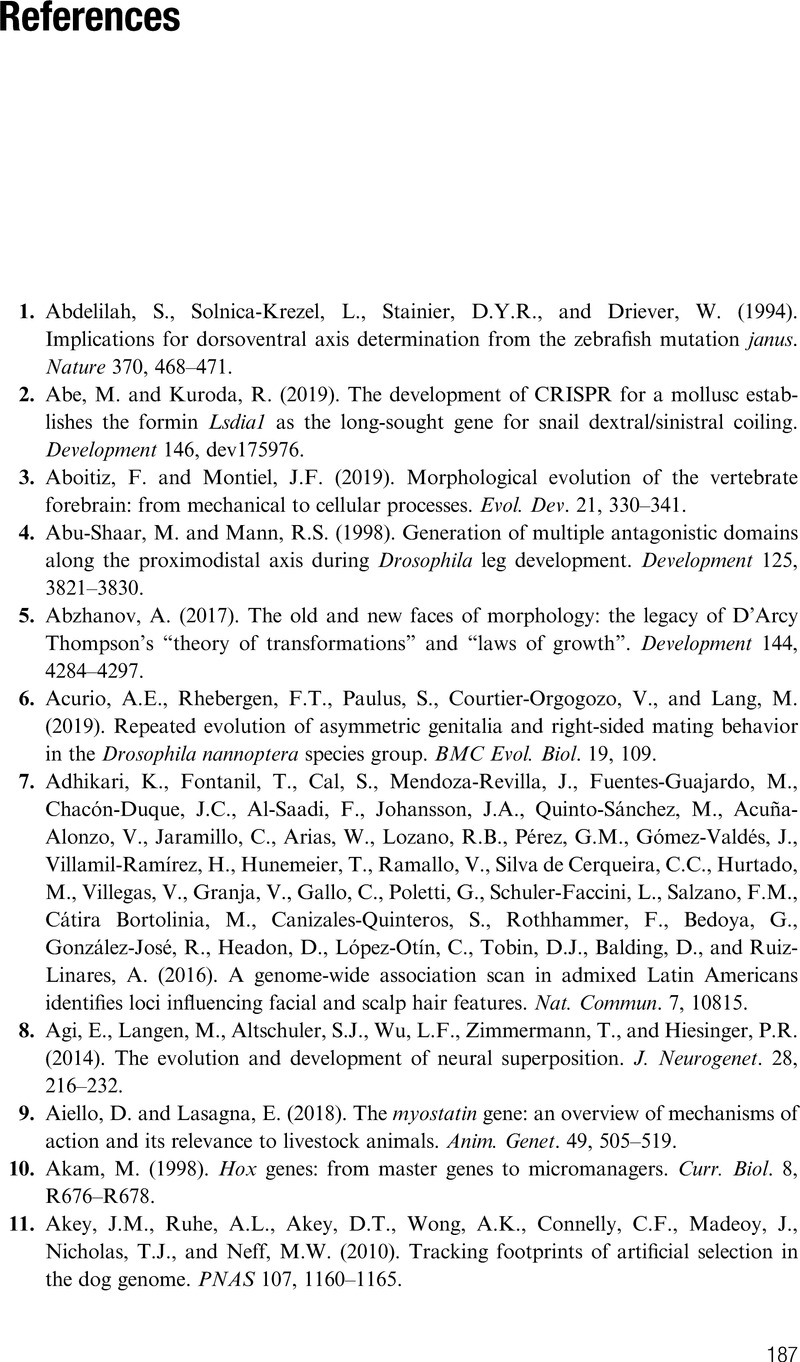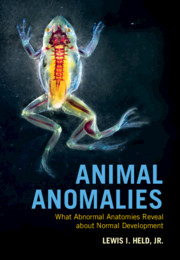References
Published online by Cambridge University Press: 26 February 2021
Summary

- Type
- Chapter
- Information
- Animal AnomaliesWhat Abnormal Anatomies Reveal about Normal Development, pp. 187 - 260Publisher: Cambridge University PressPrint publication year: 2021



